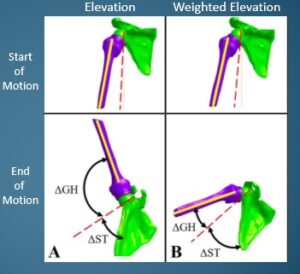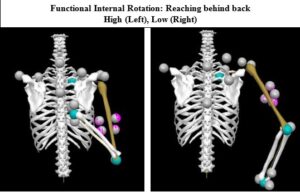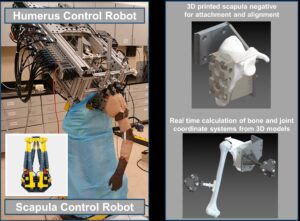Congratulations to Biomedical Engineering Student, Hema Sulkar for her Outstanding Dissertation Award!
In light of this accomplishment we asked Hema a few questions:
Can you provide a brief summary of your Ph.D. Dissertation?
Shoulder joint replacements are increasing as pathologies such as osteoarthritis, non-reparable rotator cuff tears, and others are becoming more frequent. The reverse total shoulder

arthroplasty (rTSA) is a joint replacement procedure recommended to patients with shoulder pathology after conservative treatment options have not yielded satisfactory results. It reverses the joint anatomy, replacing the humeral head with a cup and scapula glenoid with a hemispherical implant component. While pain relief and improvement in function are common after rTSA, the range of motion (ROM) outcomes can vary considerably across patients.
 The overall aims of this dissertation were to investigate alterations in joint kinematics that cause ROM limitations after the rTSA procedure, and develop tools to allow further study of biomechanics in this population. This work utilized motion capture using biplane fluoroscopy along with skin markers to accurately measure movement of the scapula and humerus. Patients with rTSA performed activities such as elevating their arm with and without a handheld weight, and reaching behind the back to capture activities of daily living. An in vivo biomechanical shoulder simulation system was designed and developed to simulate shoulder motion in the laboratory. This system allowed replication of rTSA shoulder biomechanics and evaluation of implant components.
The overall aims of this dissertation were to investigate alterations in joint kinematics that cause ROM limitations after the rTSA procedure, and develop tools to allow further study of biomechanics in this population. This work utilized motion capture using biplane fluoroscopy along with skin markers to accurately measure movement of the scapula and humerus. Patients with rTSA performed activities such as elevating their arm with and without a handheld weight, and reaching behind the back to capture activities of daily living. An in vivo biomechanical shoulder simulation system was designed and developed to simulate shoulder motion in the laboratory. This system allowed replication of rTSA shoulder biomechanics and evaluation of implant components.
Why did you choose Biomedical engineering and this dissertation topic?
I’ve been fascinated by the complexity of biological systems, how diseased states arise, and medical interventions. Biomedical Engineering was particularly interesting to me as it supported these curiosities and my analytical strengths.
This dissertation topic allowed me to work on both clinical and engineering aspects. I was interested in gaining a deeper understanding of clinically relevant research and engineering solutions to impact our understanding. This work provided a breath of experiences covering my interests, and I believe added knowledge and tools to a current area of research.
What are some tactics that you use to research and write?
 I was fortunate to be in a setting at the Orthopaedic Research Lab where different groups used similar tools and techniques, and we could bounce off thoughts to get out of a blindspot or share tips on troubleshooting. During the writing seminar course, I learned of the sequential nature of being a writer, reviewer, and editor. I used this method to write more efficiently. Wearing one hat at a time and cycling through the roles provided structure to my writing process.
I was fortunate to be in a setting at the Orthopaedic Research Lab where different groups used similar tools and techniques, and we could bounce off thoughts to get out of a blindspot or share tips on troubleshooting. During the writing seminar course, I learned of the sequential nature of being a writer, reviewer, and editor. I used this method to write more efficiently. Wearing one hat at a time and cycling through the roles provided structure to my writing process.
What are you future plans?
My dissertation work has given me a solid foundation in research, clinical needs, and engineering solutions. I plan to build on this foundation and continue to work in a cross-functional environment where various perspectives can come together to create an impact. Currently, I am leveraging my experiences and background in a role that interfaces between clinical and engineering spaces.
